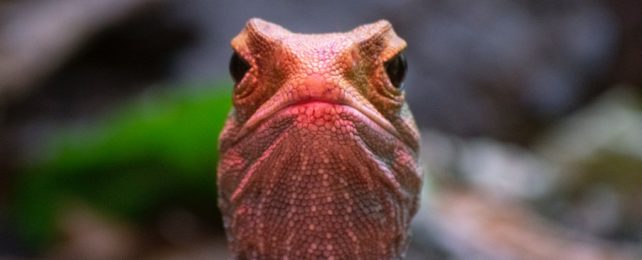Commonly assumed to be silent, 53 animals have had their 'voices' added to a family tree of vocalizations in an effort to determine when acoustic communication emerged in evolutionary history.
The species that are finally being heard come from four different animal clades, including 50 turtle species, the South American lungfish (Lepidosiren paradoxa), a limbless amphibian called Cayenne caecilian (Typhlonectes compressicauda), and a reptile from New Zealand known as a tuatara (Sphenodon punctatus).
"All recorded species were found to possess a varied acoustic repertoire comprising a number of different sounds," the authors conclude.
The fact that so many species across the turtle tree of life share an ability to make vocal sounds strongly suggests it is ancestral to the entire turtle clade.
What's more, when researchers combined the turtle data with an analysis of 1,800 other vertebrates with lungs, they found evidence of a common origin of sound production and acoustic communication across all animals in possession of enough backbone to draw and exhale breath.
Compared to birds and mammals, amphibians and reptiles are far less studied, but just because we don't have much data on their sound production, doesn't mean they aren't making noise.
If we really want to understand how acoustic communication evolved, researchers argue, we have to systematically document these "key, neglected groups".
This is exactly what the current study attempted to test. The authors only searched for sound production among 106 neglected species, but they were still able to find dozens of examples of acoustic communication in the available literature. Even with such a limited sample size, the evolutionary origins of animal sound suddenly grow much deeper.
Today, the reigning theory on acoustic communication suggests that this fundamental trait arose multiple times across the animal tree of life. This is based on an apparently wide variety of ear structures and vocal morphologies seen among birds and mammals.
But this new phylogenetic analysis suggests that is incorrect. The fact that animals so far apart on the tree of life are producing sound in similar ways and for similar reasons, whether it be for mating, communication, or parenting, suggests the skill shares a common origin. It might have evolved just once before diverging.
In fact, the trait seems to date back to an ancestor common to a wide variety of modern vertebrates that lived 407 million years ago. Taking links between lungs and swim bladders into account, that date could even be pushed back further.
"Our results now show that acoustic communication did not evolve multiple times in diverse clades, but has a common and ancient evolutionary origin," concludes paleobiologist Marcelo Sánchez from the University of Zurich in Switzerland.
The findings are a good reminder that just because an animal is hard to hear, doesn't mean we shouldn't listen to them.
The study was published in Nature Communications.
